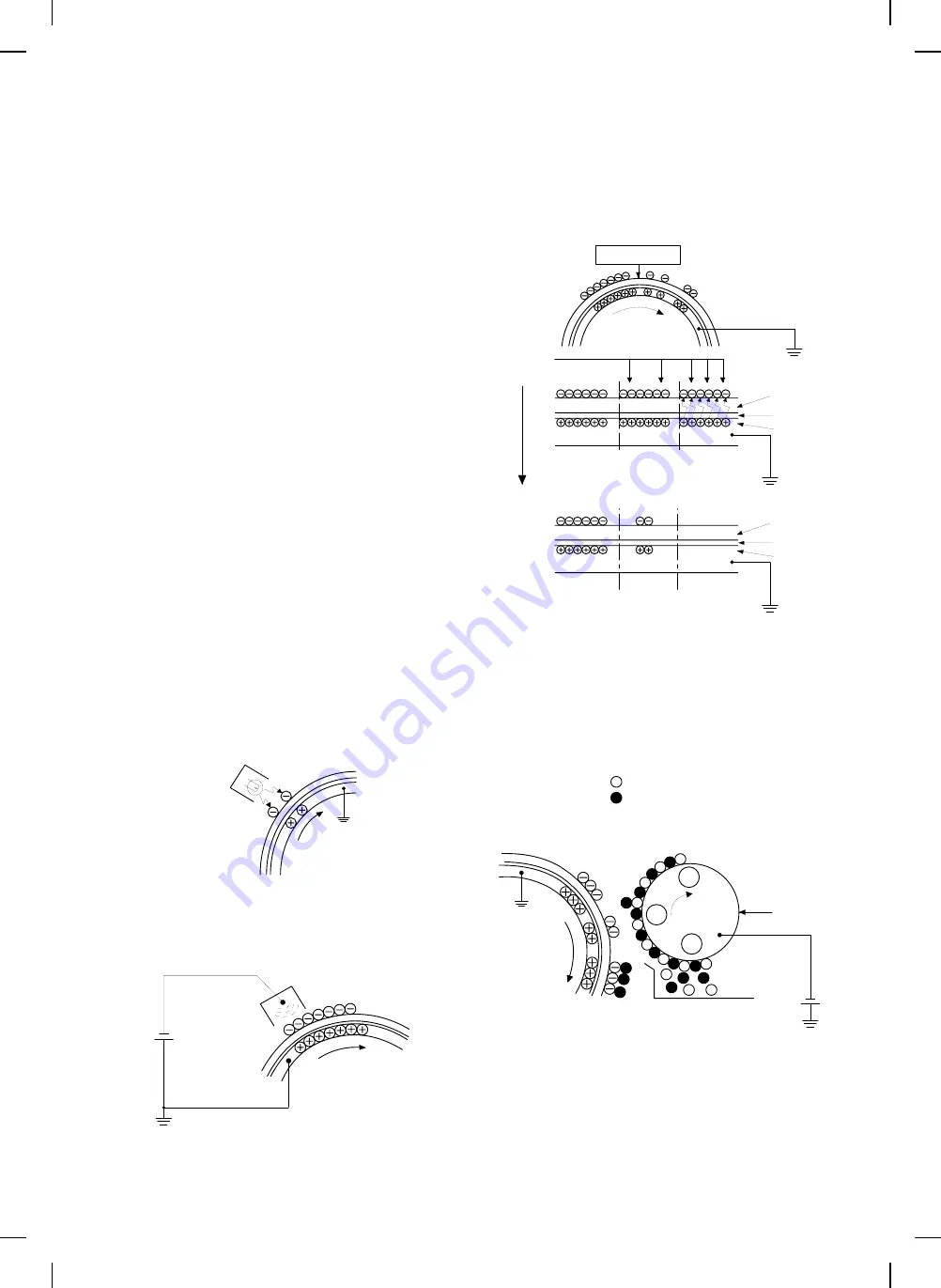
2. Image forming process steps
Image forming:
A charge is applied to the drum surface by the main corona, and the
image of the original is exposed by the copy lamp. The charge in a
light exposed image area is dissipated according to the degree of
light intensity.Toner is attracted to the charge areas on the drum and
the toner forms a visible image on the drum surface.
Step-1: Optical discharge
Residual charge on the drum surface is removed.
Step-2: Charge
Even negative charge is given to the drum surface.
Step-3: Exposure
Latent image is formed on the drum.
Step-4: Developing
Latent image formed on the drum is then developed into a
visible image with toner.
Step-5: Transfer
The visible image (toner image) on the drum is transferred
onto the copy paper.
Step-6: Cleaning
Residual toner on the drum surface is collected by the clean-
ing blade.
Step-7: Optical discharge
Residual charge on the drum surface is removed.
3. Description of process
Step-1: Optical discharge (by the discharge lamp)
Prior to charge, light from the discharge lamp is projected over the
drum to reduce electrical resistance of the OPC layer and remove
any residual charge to evenly neutralize the drum surface. As the
electrical resistance is decreased, the positive charge in the
aluminium layer moves to neutralize the negative charge present in
the OPC layer.
Step-2: Charge
A uniform negative charge is applied over the OPC drum surface by
the main corona unit.
Step-3: Exposure (Copy lamp, mirror, lens)
The original image is projected through the mirror and the lens to the
OPC drum by the copy lamp.
In the area where light is projected (light section of the original), the
resistance in the OPC layer reduces to discharge negative charges,
resulting in an electrostatic latent image on the drum surface.
Step-4: Developing (–150V DC bias)
The electrostatic latent image in the drum surface is converted into a
visible image by the toner. A bias potential of –150V is applied to the
carrier (MG roller) in this two component magnetic brush developing
method, and the toner is charged positive through friction with the
carrier.
Discharge lamp
OPC layer
Pigment
layer
Aluminum
drum
OPC layer
Pigment
layer
Aluminum
layer
Exposure
(Copy lamp)
Drum surface charge
after the exposure
Image area
Non-Image
area
Half-tone
area
Copy lamp light
-150V
MG roller
S
N
S
Carrier (magnetized particle)
:
: Toner (charge positive by friction)
(N) (S) : Permanent magnet
(provided in five locations)
6 – 2
www.freeservicemanuals.info
1/11/16
Published in Heiloo, Holland.


































